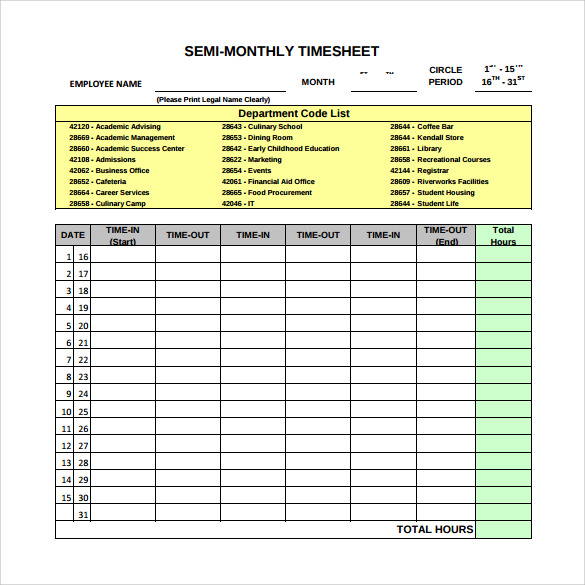In today’s fast-paced work environment, accurately tracking work hours is essential for both employers and employees. A semi-monthly timesheet provides a simple and efficient way to record and monitor the time spent on various tasks and projects. This article will delve into the details of what a semi-monthly timesheet is, how it works, and why it is beneficial for businesses and individuals alike.
What is a Semi Monthly Timesheet?
A semi-monthly timesheet is a document used to record the number of hours an employee works during a specific period, typically over two weeks. It allows employees to track their work hours, breaks, and overtime while providing employers with an accurate record of each employee’s time spent on different tasks. This helps in calculating wages, managing project budgets, and ensuring compliance with labor laws.
The semi-monthly timesheet is typically divided into columns for each day of the pay period, with rows for different tasks or projects. Employees fill in the start and end times for each task, as well as any breaks taken throughout the day. At the end of the pay period, the timesheet is submitted to the employer for review and approval.
How Does a Semi-Monthly Timesheet Work?
A semi-monthly timesheet works by providing a structured format for employees to record their work hours. Here’s a step-by-step guide on how it typically works:
1. Obtain a Semi Monthly Timesheet
Most employers provide their employees with a pre-designed semi-monthly timesheet template. However, if one is not provided, there are numerous online resources where you can find free templates that can be customized to fit your specific needs.
2. Fill in the Employee and Company Information
Start by filling in the employee’s name, employee ID, department, and other relevant information. Include the company name, address, and any other required details.
3. Enter the Pay Period Dates
Indicate the start and end dates of the pay period for which the timesheet is being filled out. This helps in ensuring accurate calculations and record keeping.
4. Record Daily Work Hours
For each day of the pay period, enter the start and end times for each task or project. Include any breaks taken, such as lunch breaks or short breaks. Make sure to record the time accurately to the nearest minute.
5. Calculate Total Hours
At the end of each day, calculate the total number of hours worked by adding up the hours for each task. Include any overtime hours if applicable.
6. Submit the Timesheet for Approval
Once the pay period is over, submit the completed timesheet to the designated person or department for review and approval. This is usually the employee’s supervisor or manager.
7. Review and Make Corrections if Needed
The supervisor or manager will review the timesheet for accuracy and completeness. If any errors or discrepancies are found, the employee will be notified and allowed to make corrections.
8. Calculate Wages and Process Payroll
Once the timesheet is approved, the information is used to calculate the employee’s wages for the pay period. This includes regular hours, overtime hours, and any applicable bonuses or incentives. The payroll department then processes the payment accordingly.
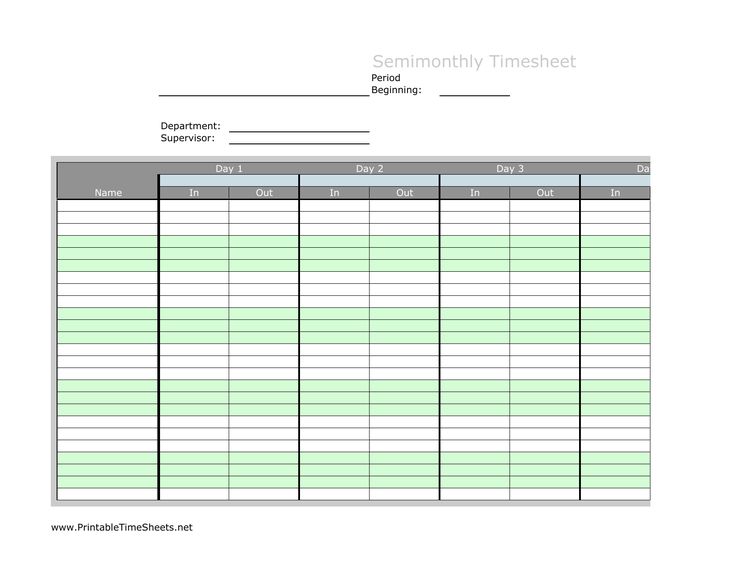
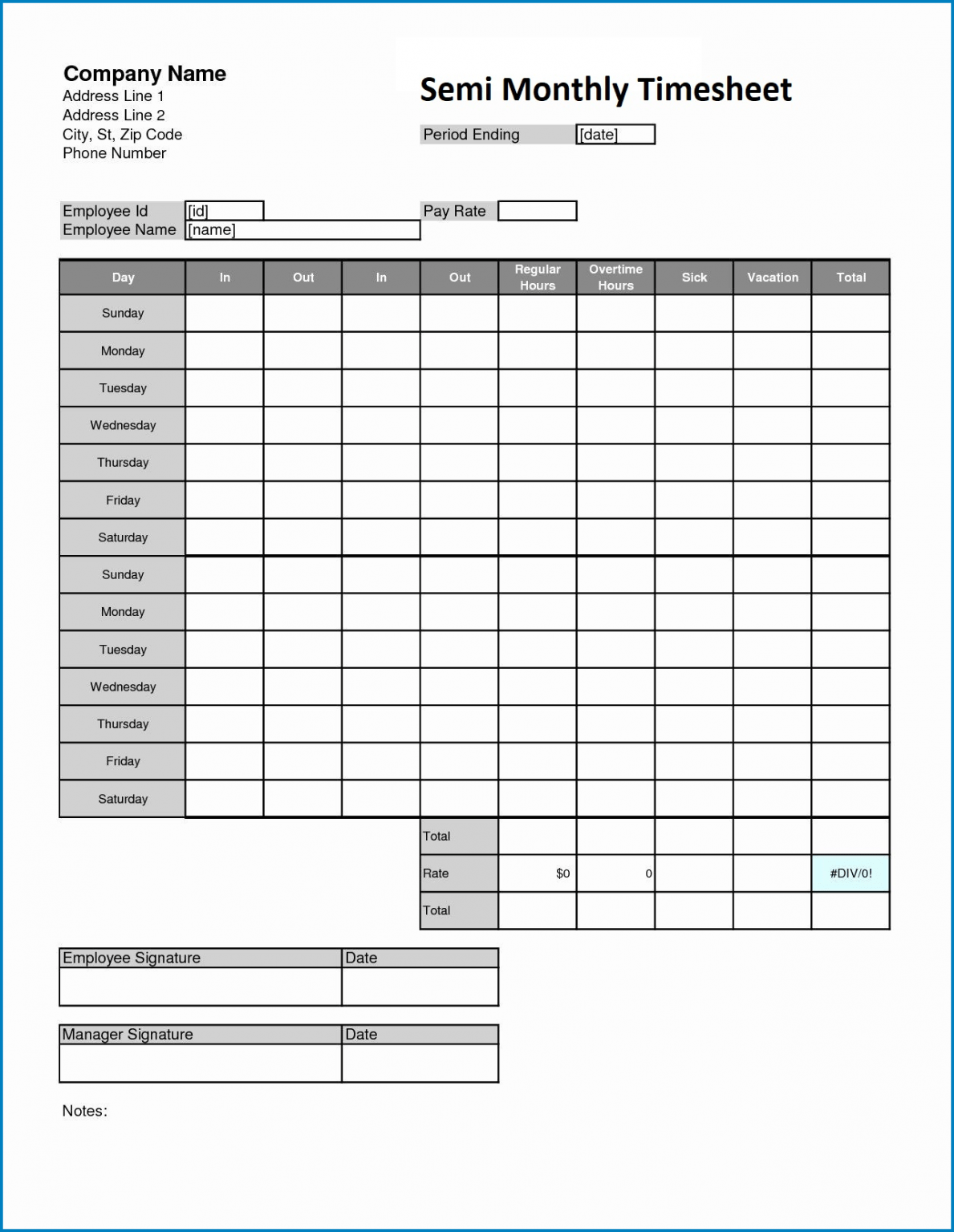
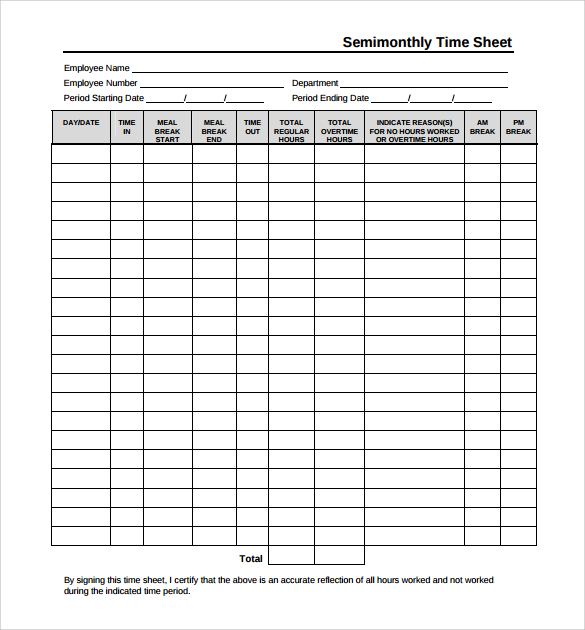
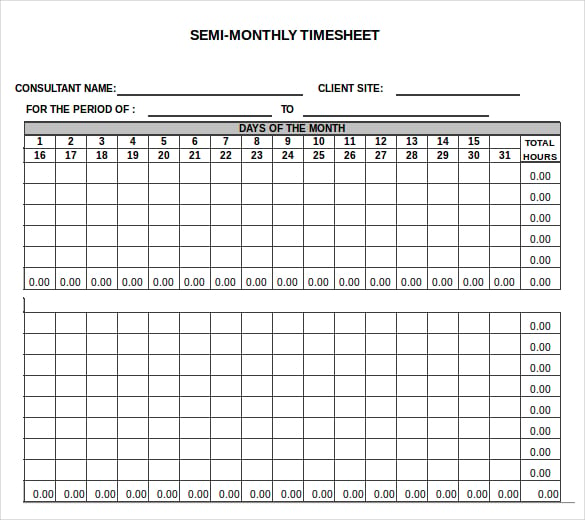
Benefits of Using a Semi-Monthly Timesheet
There are several benefits to using a semi-monthly timesheet for tracking work hours. Here are some key advantages:
- Accurate Record Keeping: A timesheet provides a detailed record of an employee’s work hours, making it easier to calculate wages, manage projects, and comply with labor laws.
- Efficient Payroll Processing: By using timesheets, the payroll department can quickly and accurately calculate wages, taking into account regular hours, overtime, and other factors.
- Improved Project Management: Timesheets help in monitoring the time spent on different tasks or projects, allowing managers to allocate resources effectively and identify areas for improvement.
- Transparency and Accountability: Timesheets promote transparency and accountability in the workplace by providing a clear record of the hours worked by each employee.
- Legal Compliance: Timesheets help ensure compliance with labor laws and regulations, such as minimum wage requirements and maximum working hours.
- Streamlined Billing: For businesses that bill clients based on hours worked, timesheets provide accurate and detailed information for invoicing purposes.
Tips for Using a Semi-Monthly Timesheet Effectively
To make the most out of your semi-monthly timesheet, consider the following tips:
- Be Consistent: Encourage employees to fill out their timesheets consistently and accurately for each day of the pay period.
- Provide Clear Instructions: Make sure employees understand how to fill out the timesheet correctly. Provide clear instructions and examples if needed.
- Review Regularly: Supervisors should review timesheets regularly to ensure accuracy and address any issues promptly.
- Keep Records: Maintain a record of all timesheets for future reference, including any changes or corrections made.
- Use Technology: Consider using timesheet software or apps to streamline the process and eliminate manual calculations.
- Train Employees: Provide training to employees on how to use the timesheet effectively and the importance of accurate time tracking.
- Encourage Transparency: Foster a culture of transparency and trust by openly discussing the purpose and benefits of using timesheets.
Conclusion
A semi-monthly timesheet is a valuable tool for accurately tracking work hours and managing projects. By implementing a structured approach to time tracking, businesses can improve efficiency, ensure legal compliance, and promote transparency in the workplace. Whether you are an employer or an employee, utilizing a semi-monthly timesheet can greatly benefit your work processes and ultimately contribute to your overall success.
Semi Monthly Timesheet Template Excel – Download
